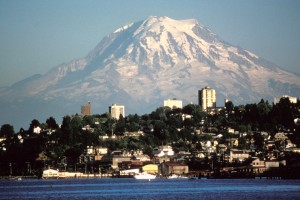Uncovering Tacoma Unit Plan
|
Stage 1 – Desired Results |
||
Established Goals:
|
||
| Understandings (including Propositions ++):Students will understand that…Their own lives connect to the history that is apart of their community or cityThere is a connection between history and modern eventsThere are universal themes of humanity, including conflict and repair (content)They can make critical observations for fact and opinion (cognitive)
They can make historical meanings from facts and primary sources (content); integrate sources
That monuments, buildings, statues, and parks have historical signifigance. |
Unit/Essential Questions:
|
|
|
Stage 1 – Desired Results (cont.) Learning Targets (Standards deconstructed below) |
Stage 2 – Assessment Evidence (Appropriate to the target type: Refer to Stiggins p.94) |
|
Knowledge (Refer to Cappuis & Stiggins pp. 44-47)
|
|
|
Reasoning (Refer to Cappuis and Stiggins pp. 47 – 53)
|
|
|
Skills (Refer to Cappuis and Stiggins pp. 54-55)
|
Students will submit group photos to flickr class site.Student groups will publish a web page about the person, place, or event they investigated. | |
Products (Refer to Cappuis and Stiggins pp. 55-57)
|
|
|
|
Stage 3 – Learning Plan |
||
| What learning experiences and instruction will enable students to achieve the desired results? How will the designW: Help the students know Where the unit is going and What is expected? Help the teacher know Where the students are coming from (prior knowledge, interests, Funds of Knowledge, Smartnesses)H: Hook all students and Hold their interest? E: Equip students, help them Experience the key ideas and Explore the issues? R: Provide opportunities to Rethink and Revise their understandings and work? (Disequilibrium, Student Voice)E: Allow students to Evaluate their work and its implications? (Student voice)T: Be Tailored (personalized) to the different needs, interests, and abilities of learners including connections to the communities?O: Be Organized to Maximize initial and sustained engagement as well as effective learning? | ||
| Technology | Activity type | What to anticipate to use effictively ? | How does it support learning? |
| Digitial archives, websites, electronic books | Read text | Model the proccess show groups how to format research quieries.Create student activity they help them practice researching on the unit by answering specific questions about a random subject.Give students resouces with database cites they can use.Give students website resources | Teaches analytical skills.Teaches research skills.Teaches critical thinking skills. |
| digital camera | View images | Go over ethics of taking pictures in public placesModel how to upload picturesCreate tutorial resources sheet on how to upload photos to flickr citeArrange groups so that there is a technology strong student in each group if possible. | It teaches students to play the role of a reporter and investigator which are crucial roles to every historian. |
| blog/Wiki | Generate an Historical narrative, Do a Presentation, Historical Weaving | What functions on Wiki are essential to teach?-How does webpage presentation best serve this project?-Is there value in having student work on an online database? | Organizes Information for students-Helps students showcase their research-Allows for easy student collaboration |
| Word Processor, wiki/ Google docs | Generate a narrative | Students ability to analyze primary and secondary documents.Modeling of examples of historical narratives.Group roles regarding who types when using group wiki or google doc | Teaches students how use word processors to write for different circumstances.Allows for easy students colloborationHelps students with the mechanics, grammar, spelling, and structure of their papers. |
| Iphoto/flicker | View images | What functions on iPhoto and Flickr are essential to teach?-How does taking pictures best serve this project?What if students are unable to use travel to take photographs? | Helps students get see their community through an artistic lens.Helps students display knowledge of their subject by providing visual aids. |


